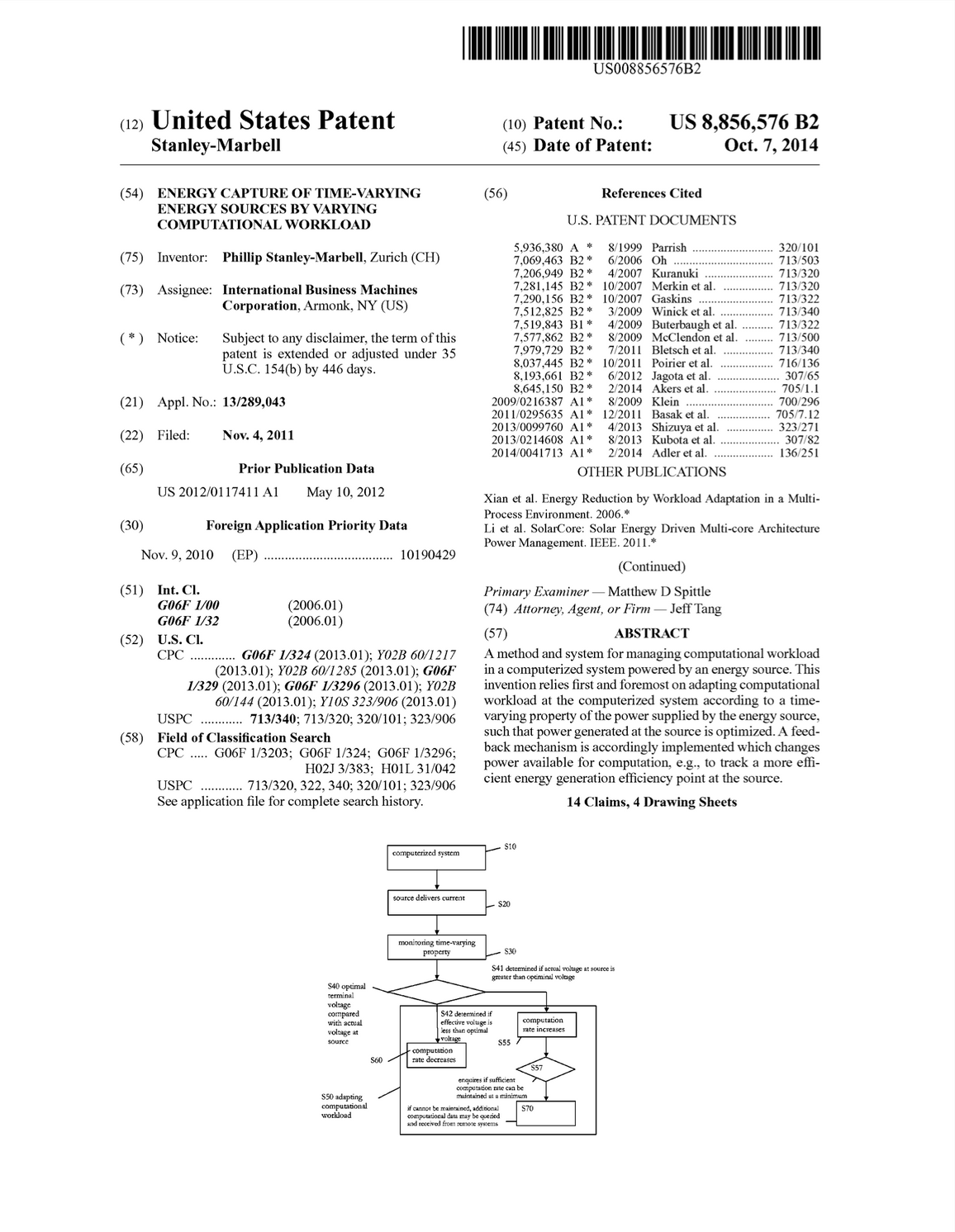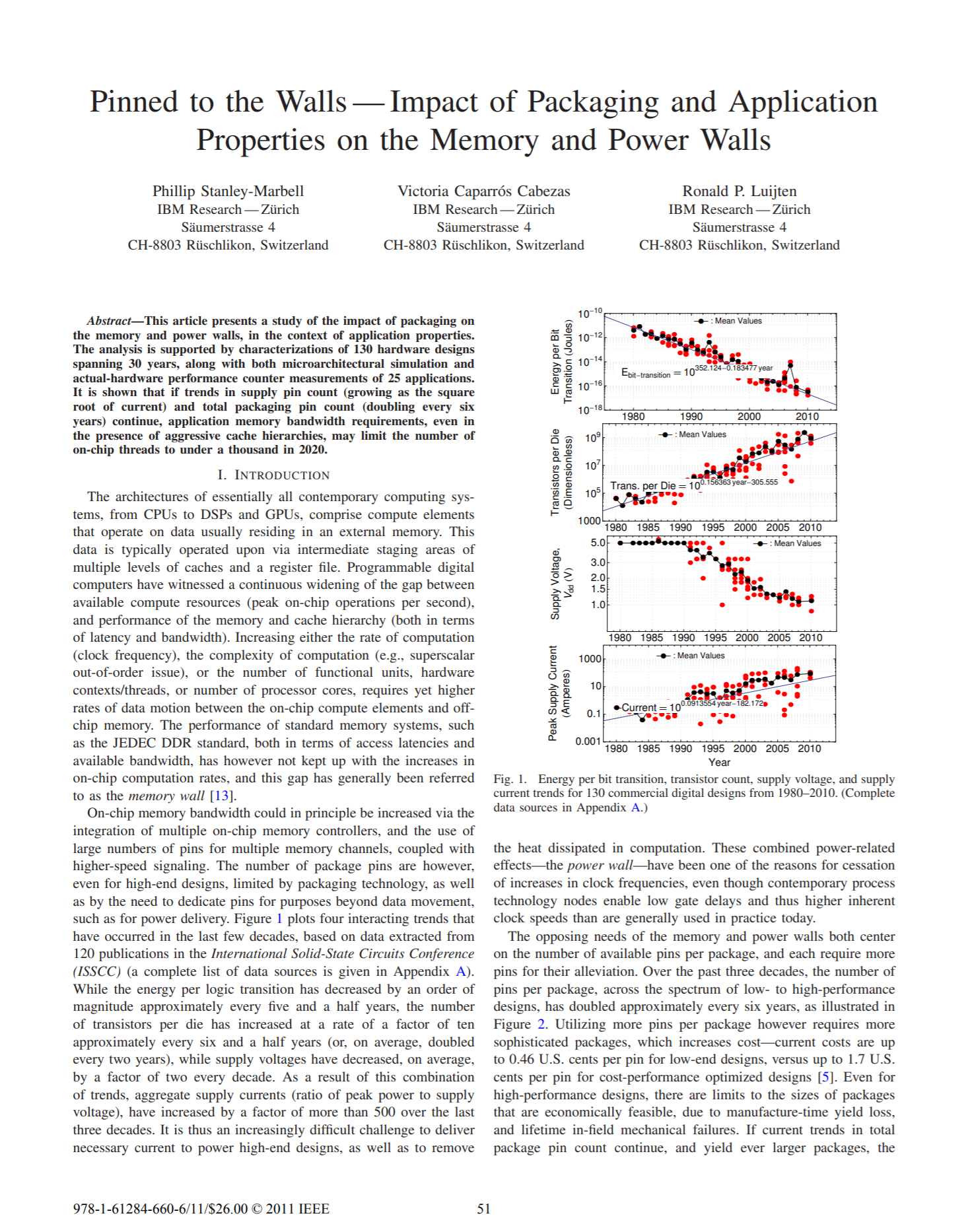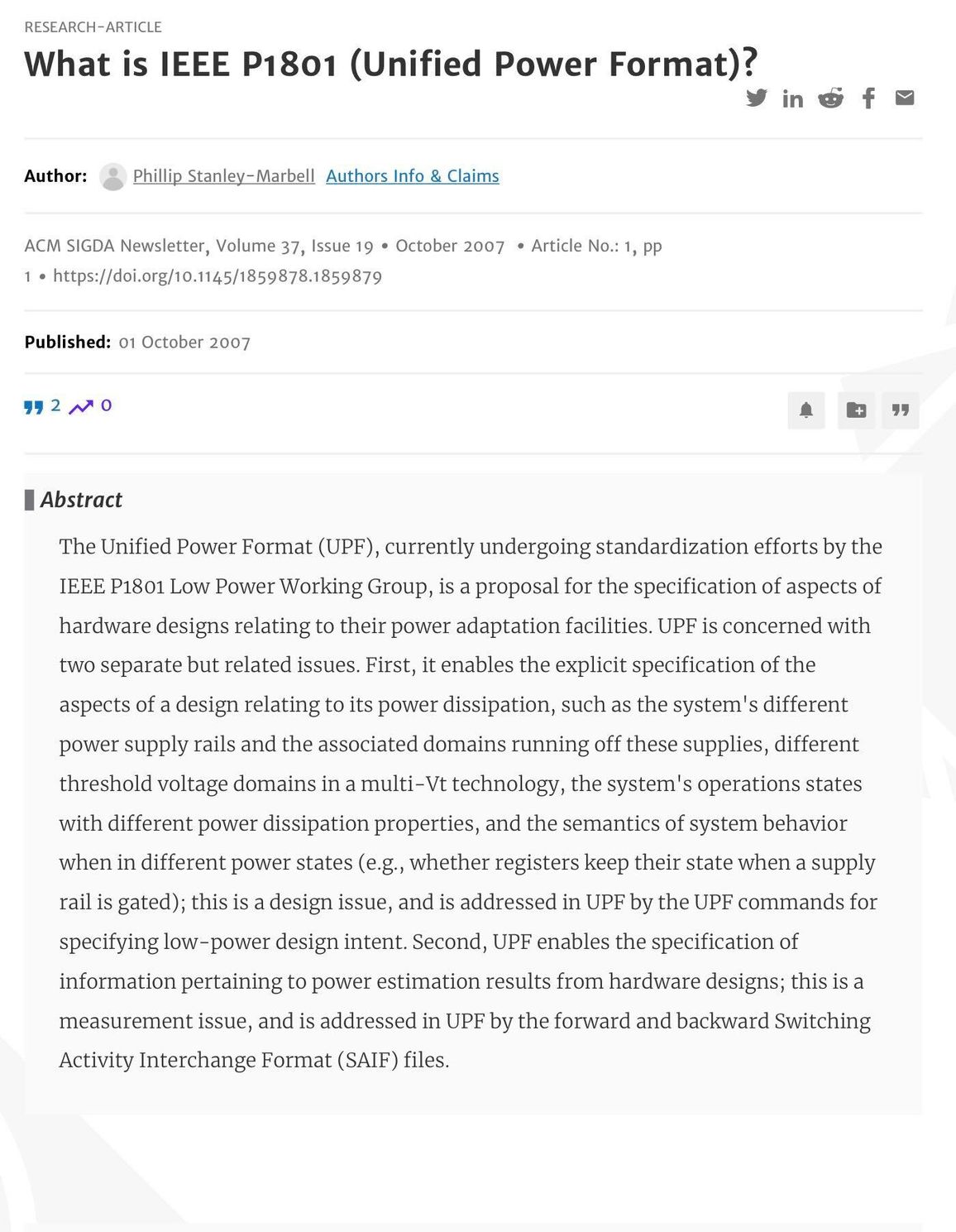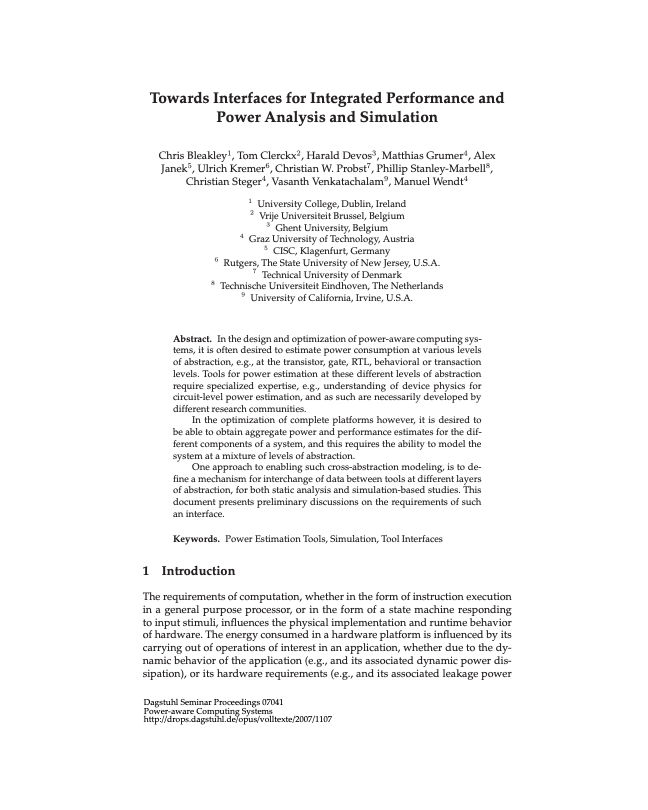Performance, Power, and Thermal Analysis of Low-Power Processors for Scale-Out Systems


Abstract
There is increased interest, in high-performance computing as well as in commercial data centers, in so-called scale-out systems, where large numbers of low-cost and low-power-dissipation servers are used for workloads which have available coarse-grained parallelism. One target class of devices for building scale-out systems is the class of low-power processors, such as those based on the ARM architecture, the Power Architecture, and the Intel Atom processor. This article presents a detailed characterization of three contemporary low-power processors covering all the aforementioned IS As, all implemented in state-of-the-art 45nm semiconductor processes. Processor performance, power dissipation, thermal load, and board-level power dissipation apportionment are presented, via a combination of hardware performance counters, OS-level timing measurements, current measurements, and thermal imaging via a microbolometer array. It is demonstrated that while certain processors might provide low power dissipation, the most energy-efficient platform depends on the characteristics of the application, and the design of the entire platform (including integrated versus on-board peripherals, power supply regulators, etc.). The lowest-power platform showed a power-efficiency advantage of almost four times lower idle power dissipation, and almost five times lower active power dissipation for a single-threaded workload, versus the highest-power-dissipation platform studied. The latter however achieved a factor of two better energy-efficiency than its closest competitor, when executing a throughput-oriented workload, due to significantly better compute performance and available hardware concurrency.
Cite as:
P. Stanley-Marbell and V. C. Cabezas, "Performance, Power, and Thermal Analysis of Low-Power Processors for Scale-Out Systems," 2011 IEEE International Symposium on Parallel and Distributed Processing Workshops and Phd Forum, 2011, pp. 863-870, doi: 10.1109/IPDPS.2011.225.
BibTeX:
@INPROCEEDINGS{6008931,
author={Stanley-Marbell, Phillip and Cabezas, Victoria Caparros},
booktitle={2011 IEEE International Symposium on Parallel and Distributed Processing Workshops and Phd Forum},
title={Performance, Power, and Thermal Analysis of Low-Power Processors for Scale-Out Systems},
year={2011},
volume={},
number={},
pages={863-870},
doi={10.1109/IPDPS.2011.225}
}




